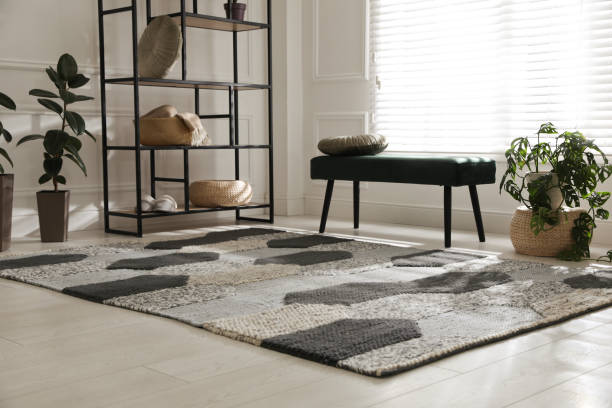Introduction
When it comes to interior design, the significance of rugs often goes unnoticed. However, these seemingly simple pieces of fabric possess the transformative power to ground a space and elevate the entire ambiance of a room. The art of choosing and placing rugs involves a deep understanding of the space, its functionality, and the aesthetic you wish to achieve. In this article, we delve into the intricate nuances of how rugs can significantly impact interior design, offering insights into the various styles, materials, and placement techniques that can bring out the best in any space.
The Power of Visual Impact
Rugs serve as the foundational element in interior design, setting the stage for the overall aesthetic of a room. A well-chosen rug has the potential to tie together disparate design elements, creating a cohesive and harmonious look. The colors, patterns, and textures of a rug can serve as a focal point or as a complementary piece, depending on the overall design scheme. By carefully selecting a rug that resonates with the theme of the room, one can instantly inject character and personality into an otherwise plain space.
Styles and Materials: Choosing the Perfect Rug
Selecting the right rug involves considering various factors, including the style and material that best complement the room's existing decor. Traditional, contemporary, minimalist, or eclectic—there's a rug for every style. For instance, a Persian rug with intricate floral patterns can add an aura of sophistication to a room, while a sleek, modern rug with geometric designs can infuse an air of contemporary elegance. Additionally, the choice of material, be it wool, silk, jute, or synthetic fibers, can significantly impact the overall look and feel of the room, as each material brings its unique texture and durability to the space.
Creating Balance and Harmony
Achieving balance and harmony in interior design is essential, and rugs play a crucial role in this aspect. By carefully selecting the size, shape, and placement of a rug, you can create a sense of proportion and symmetry within a room. Placing a large rug in a living room, for example, can define the seating area and establish a sense of unity, while smaller rugs can be used to highlight specific spaces, such as bedside areas or reading nooks. Understanding the proportions of the room and furniture is key to ensuring that the rug does not overpower or underwhelm the overall design.
Adding Texture and Depth
Rugs can add an extra layer of texture and depth to a space, making it more visually appealing and inviting. Whether it's a luxurious, plush rug that invites bare feet to sink into its soft fibers or a flat-woven rug that adds a sense of sleekness, a rug's texture can significantly enhance a room's overall sensory experience. By incorporating rugs with varying textures, one can create a dynamic and multi-dimensional space that engages the senses and adds depth to the design scheme.
Maintenance and Longevity
The longevity of a rug heavily depends on its maintenance and care. Regular vacuuming, spot cleaning, and professional deep cleaning are essential to preserve the rug's appearance and extend its lifespan. Additionally, understanding the specific care requirements of different rug materials is crucial to ensure they retain their original beauty and luster over time. By implementing proper maintenance practices, you can protect your investment and continue to enjoy the transformative power of your chosen rug for years to come.
Sustainability and Ethical Considerations
In an era of heightened environmental awareness, the sourcing and production of rugs have come under scrutiny. Sustainable and ethically sourced rugs have gained significant traction in the interior design industry, with an increasing emphasis on eco-friendly materials and fair labor practices. Choosing rugs made from natural fibers, such as organic wool or jute, not only promotes environmental sustainability but also contributes to creating a healthier and more ethical design ecosystem.
Personalization and Expression
Beyond their aesthetic and functional roles, rugs provide an opportunity for personalization and self-expression within a space. From custom-made designs that reflect your unique style to vintage rugs that carry a rich history, incorporating personalized rugs can add a touch of individuality and warmth to any room. By selecting rugs that resonate with your personality and preferences, you can create a space that is not only visually appealing but also deeply reflective of your personal journey and experiences.
Conclusion
The art of grounding spaces through rugs is a multifaceted process that involves a keen understanding of design principles, aesthetics, and personal preferences. From selecting the right style and material to considering the placement and maintenance, every aspect of choosing and integrating rugs contributes to the overall ambiance and character of a room. By embracing the transformative power of rugs, you can create a space that not only reflects your unique style but also fosters a sense of warmth, comfort, and harmony within your home. Embrace the art of rug selection, and unlock the true potential of interior design to create spaces that truly resonate with your soul. tart exploring online rug stores and transform your home with the perfect rug today and combine it with the perfect sideboard buffet to get an elegant look!





Comments